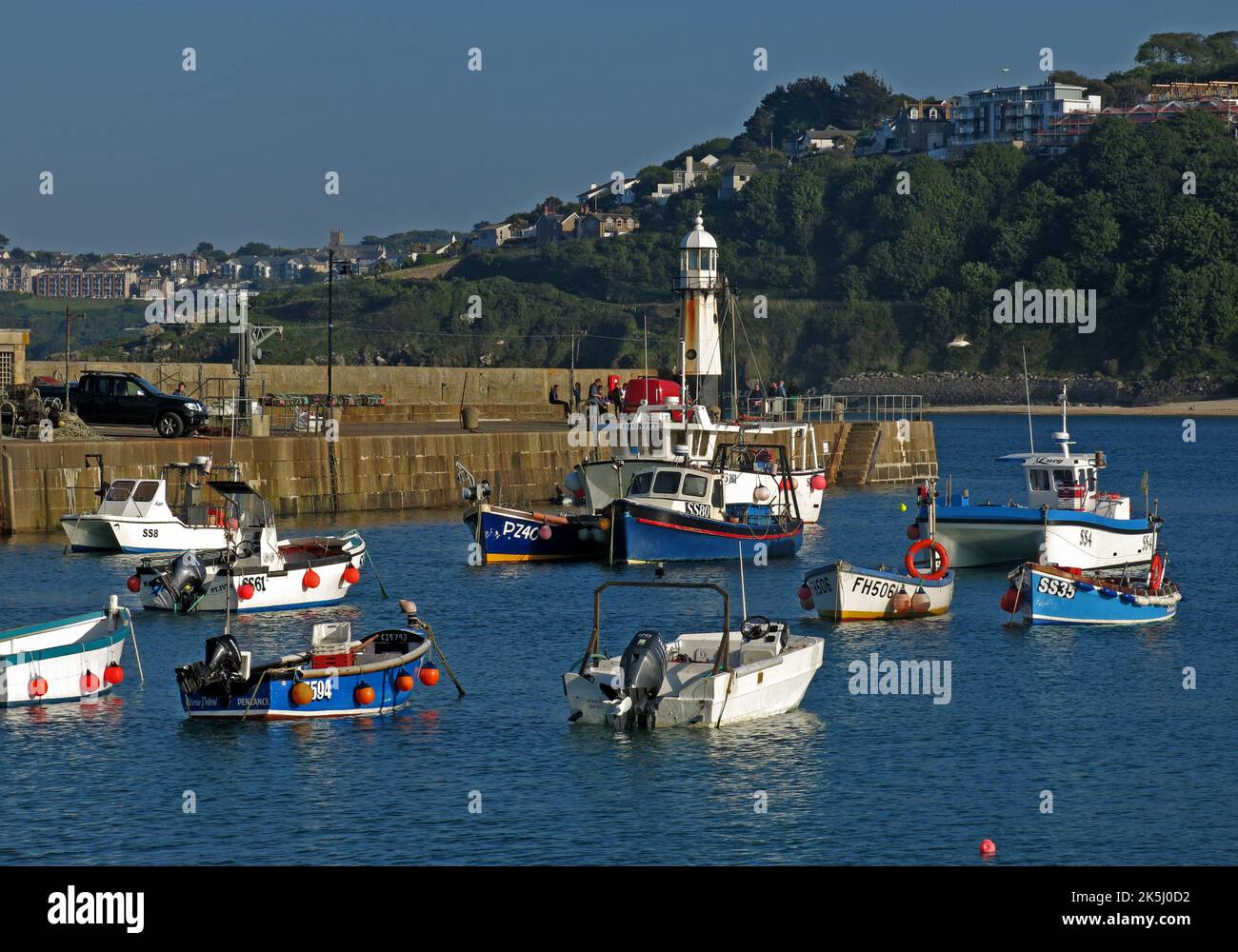The harbour at St Ives, Cornwall, England, UK, moored boats and lighthouse

Image details
Contributor:
Tony Smith / Alamy Stock PhotoImage ID:
2K5J0D2File size:
32 MB (1.4 MB Compressed download)Releases:
Model - no | Property - noDo I need a release?Dimensions:
4000 x 2800 px | 33.9 x 23.7 cm | 13.3 x 9.3 inches | 300dpiDate taken:
31 May 2014Location:
St Ives, Cornwall, England, UKMore information:
St Ives is on the western shore of St Ives Bay, its harbour sheltered by St Ives Island (a headland) and Smeaton's pier. Close to the harbour, in the old part of the town, the streets are narrow and uneven while its wider streets are in the newer parts of the town on rising ground. The town has four beaches: Porthmeor a surfing beach, Porthgwidden a small sandy cove, Harbour by the working port and Porthminster which has almost half a mile of sand St Ives (Cornish: Porth Ia, meaning "St Ia's cove") is a seaside town, civil parish and port in Cornwall, England. The town lies north of Penzance and west of Camborne on the coast of the Celtic Sea. In former times it was commercially dependent on fishing. The decline in fishing, however, caused a shift in commercial emphasis, and the town is now primarily a popular seaside resort, notably achieving the title of Best UK Seaside Town from the British Travel Awards in both 2010 and 2011. St Ives was incorporated by Royal Charter in 1639. St Ives has become renowned for its number of artists. It was named best seaside town of 2007 by The Guardian newspaper From medieval times fishing was important at St Ives; it was one of the most important fishing ports on the north Cornish coast. The original pier's construction date is unknown but the first reference to St Ives having a pier was in 1478 in William Worcester's 'Itinerary'.[28] The pier was re-built by John Smeaton between 1766 and 1770 after falling into disrepair. It was lengthened at a later date. The octagonal lookout with a cupola belongs to Smeaton's design. A. K. Hamilton Jenkin describes how the St Ives fisherman strictly observed Sunday as a day of rest. St Ives was a very busy fishing port and seining was the usual method of fishing. Seining was carried out by a set of three boats of different sizes, the largest two carrying seine nets of different sizes. The total number of crew was seventeen or eighteen. However this came to an end in 1924.